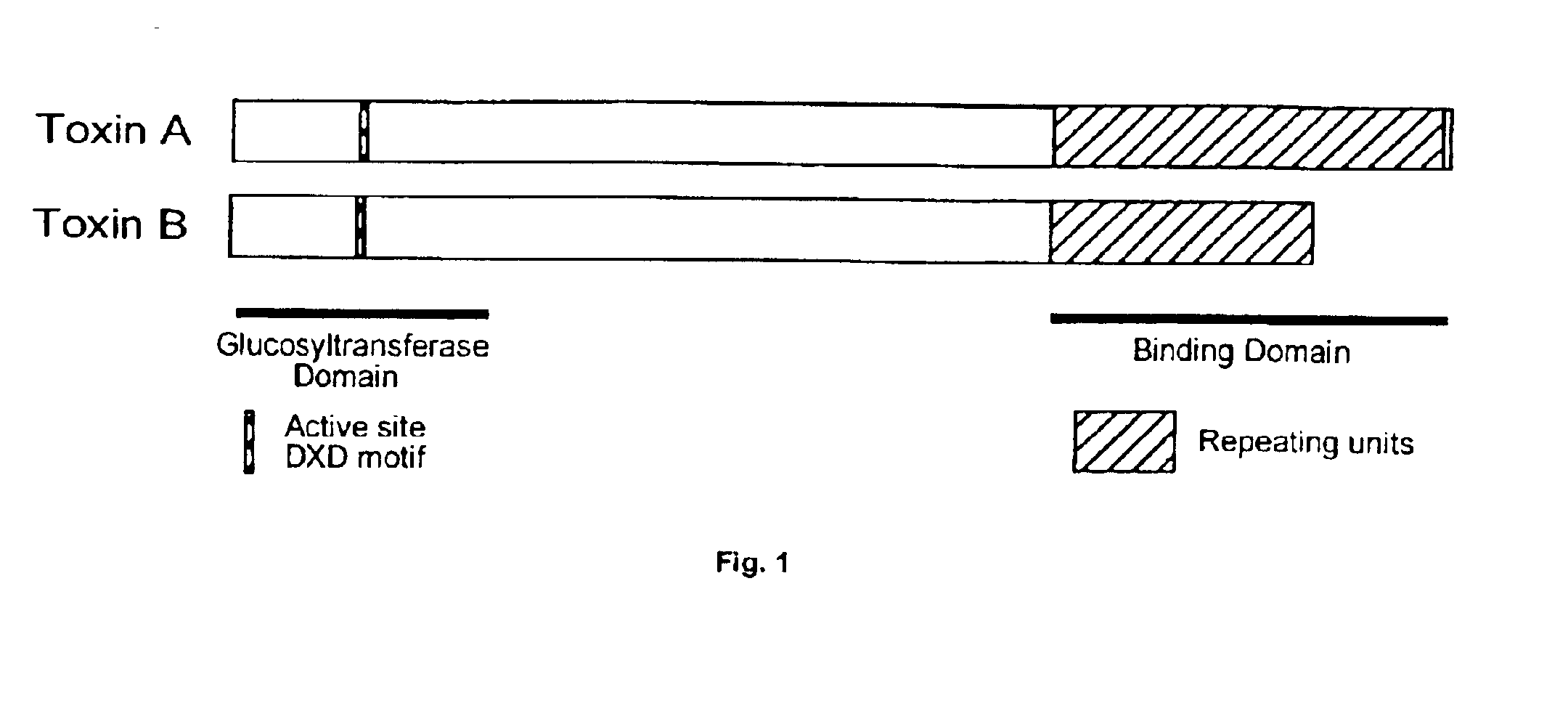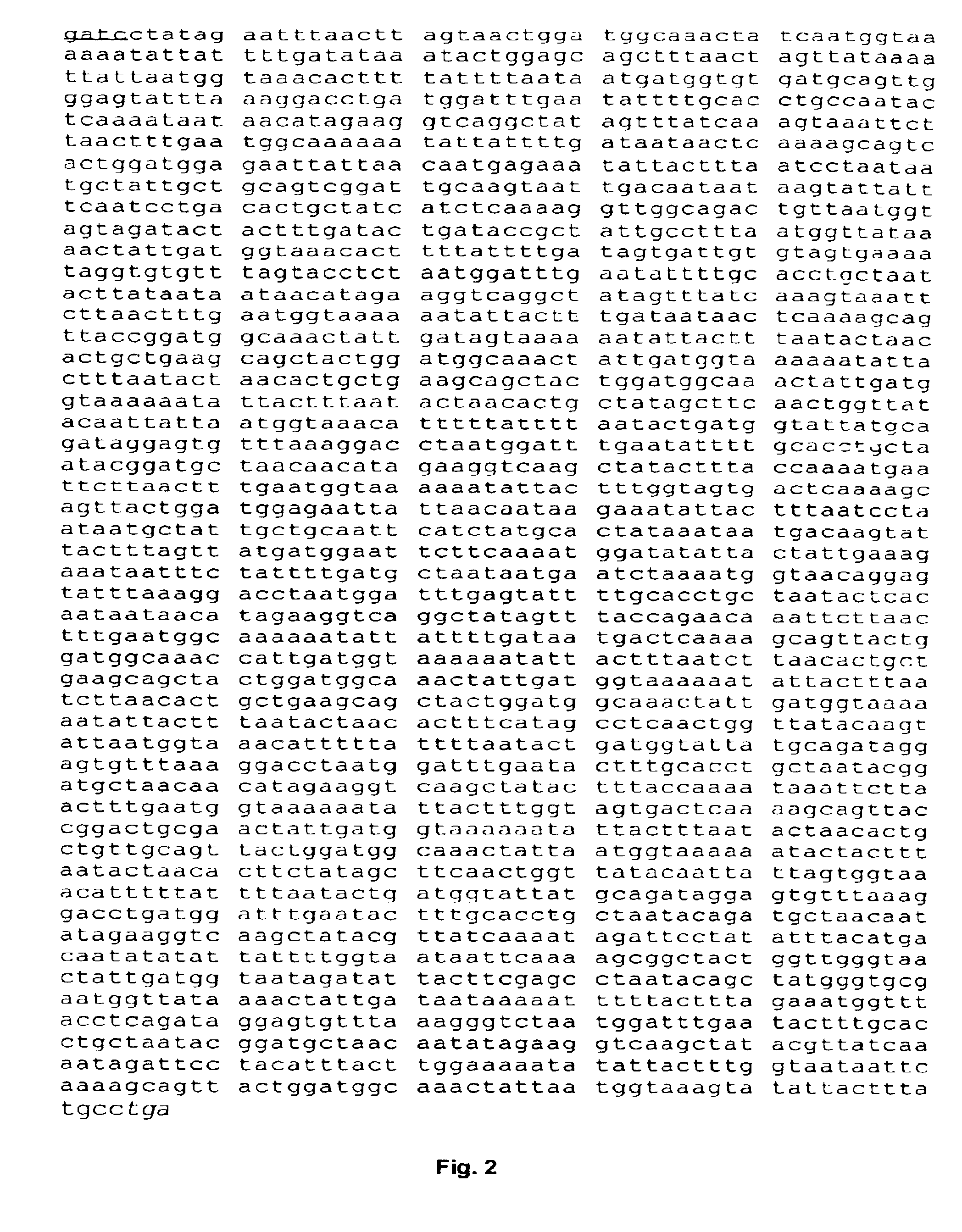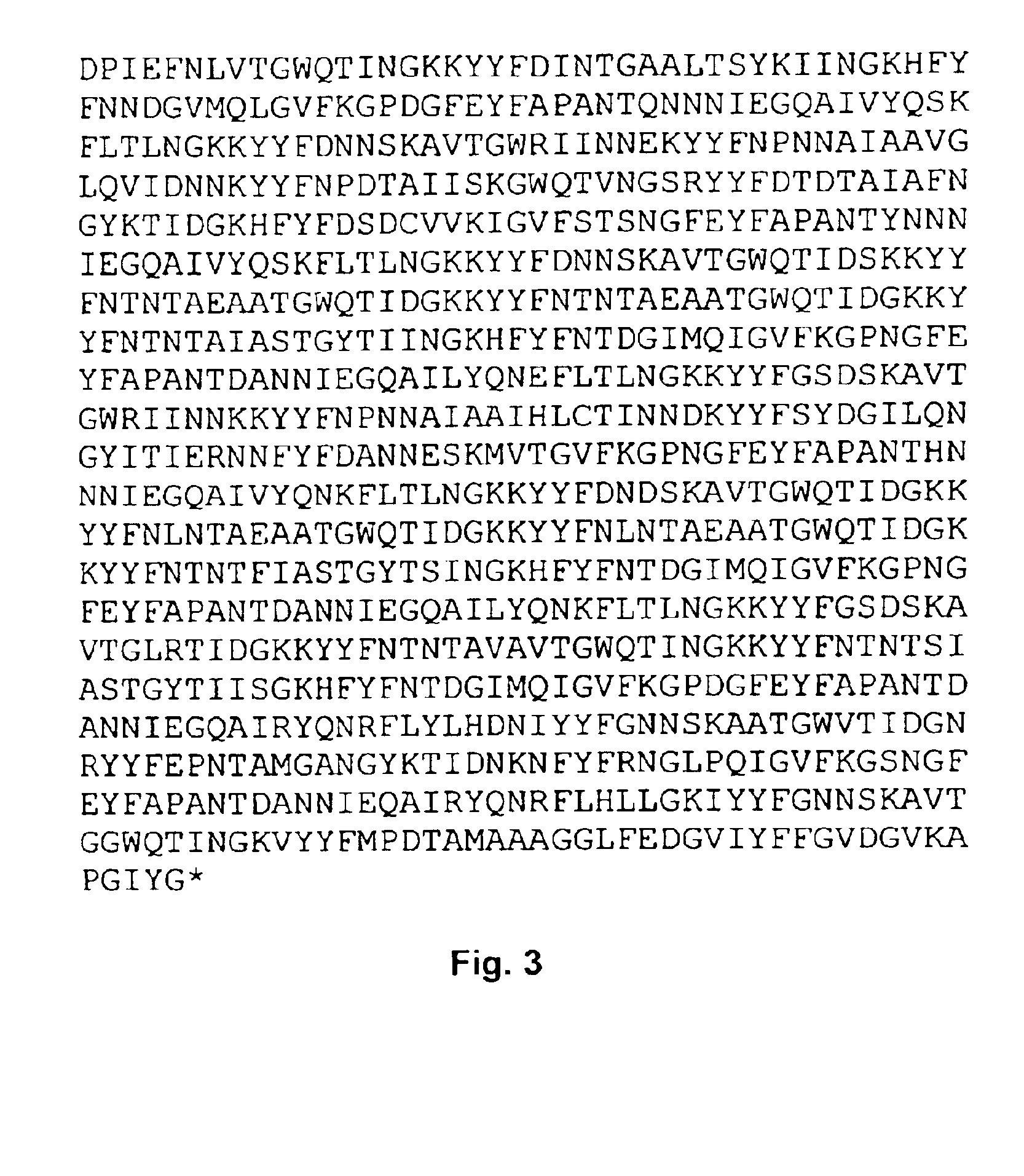Methods to produce high levels of C. difficile toxins
a technology of c. difficile and high levels, applied in the field of medical immunology, can solve the problems of not teaching the use of such adjuvants, affecting the normal intestinal microflora, and presenting certain challenges in the production of such proteins, and achieve the effect of high levels of neutralizing antibodies
- Summary
- Abstract
- Description
- Claims
- Application Information
AI Technical Summary
Benefits of technology
Problems solved by technology
Method used
Image
Examples
example 1
Construction of rARU Expression Vector.
[0044]The vector pRSETB-ARU-Kmr used for expression and purification was constructed using standard techniques for cloning (Sambrook et al., Molecular Cloning: A Laboratory Manual (1989)). The nucleotide sequence of the toxin A gene fragment encoding rARU was derived from the cloned toxin A gene (Dove et al., Infect. Immun. 58:480-488 (1990); Phelps et al., Infect Immun. 59:150-153 (1991)) and is shown in FIG. 2. The gene fragment encodes a protein 867 amino acids in length (FIG. 3) with a calculated molecular weight of 98 kDa. The gene fragment was subcloned to the expression vector pRSETB. A kanamycin resistance gene was subsequently subcloned to the vector. The resulting vector pRSETB-ARU-Kmr expresses rARU. An additional 31 amino acids at the N-terminus of the recombinant protein are contributed by the expression vector pRSETB. The final calculated molecular weight of the recombinant protein is 102 kDa.
example 2
Expression and Purification of rARU.
[0045]Escherichia coli T7 expression host strain BL21(DE3) was transformed with pRSETB-ARU-Kmr as described (Sambrook et al. Molecular Cloning: A Laboratory Manual (1989)). One liter cultures were inoculated with 10 ml of overnight growth of Escherichia coli BL21(DE3) containing pRSETB-ARU-Kmr and grown at 37° C. in Terrific broth (Sigma, St. Louis, Mo.) containing 25 μg / ml of kanamycin to an O.D. 600 of 1.8-2.0 and isopropyl B-D-thiogalactopyranoside (IPTG) was added to a final concentration of 40 μM. Cells were harvested after 22 h of induction, suspended in 0.1 liter of standard phosphate buffered saline, pH 7.4, containing 0.2% casamino acids, and disrupted by sonication. Cellular debris was removed from the lysate by centrifugation. Lysates typically contained a titer (reciprocal of the highest dilution with an A450 greater than 0.2) of 106 in the TOX-A test EIA (TechLab, Inc., Blacksburg, Va.). Lysates were saturated with 40% ammonium sulfat...
example 3
Construction of rBRU Expression Vector.
[0046]The vector pRSETC-BRU-Kmr used for expression and purification was constructed using standard techniques for cloning (Sambrook et al., Molecular Cloning: A Laboratory Manual (1989)). The nucleotide sequence of the toxin B gene fragment encoding rBRU was derived from the cloned toxin B gene (Barroso et al., Nucleic Acids Res 18:4004 (1990)) and is shown in FIG. 6. The gene fragment encodes a protein 622 amino acids in length with a molecular weight of approximately 70 kDa. The gene fragment was subcloned to the expression vector pRSETC. A kanamycin resistance gene was subsequently subcloned to the vector. The resulting vector pRSETC-BRU-Kmr expresses rBRU.
PUM
| Property | Measurement | Unit |
|---|---|---|
| Time | aaaaa | aaaaa |
| Density | aaaaa | aaaaa |
| Density | aaaaa | aaaaa |
Abstract
Description
Claims
Application Information
 Login to View More
Login to View More - R&D
- Intellectual Property
- Life Sciences
- Materials
- Tech Scout
- Unparalleled Data Quality
- Higher Quality Content
- 60% Fewer Hallucinations
Browse by: Latest US Patents, China's latest patents, Technical Efficacy Thesaurus, Application Domain, Technology Topic, Popular Technical Reports.
© 2025 PatSnap. All rights reserved.Legal|Privacy policy|Modern Slavery Act Transparency Statement|Sitemap|About US| Contact US: help@patsnap.com



